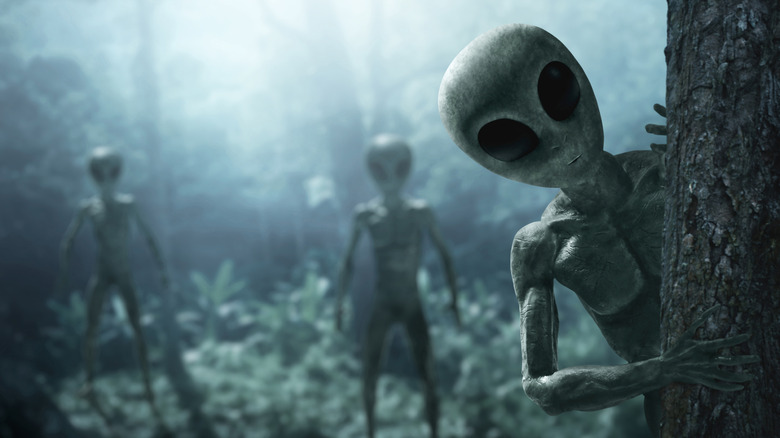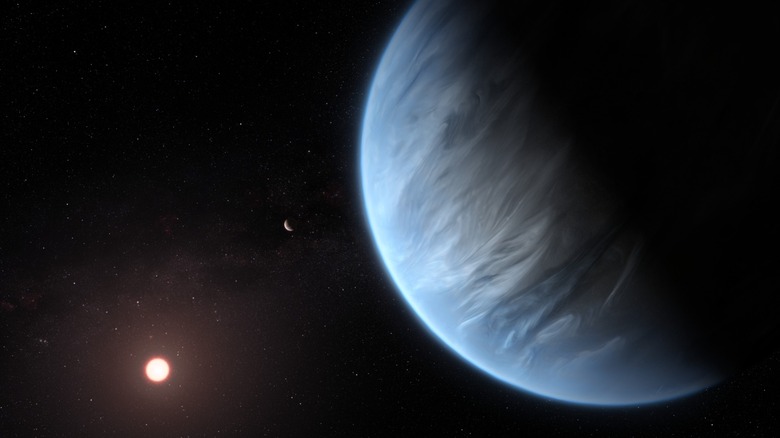Did Scientists Just Discover Life On Another Planet? What The JWST Actually Found (And What It Didn't)
Some scientists are still piecing together the full history of life on Earth and have found that terrestrial life may not have started on our planet, possibly originating instead from asteroids. If that's the case, then it's no stretch to think that life could exist on other planets in the universe. K2-18 b is one of a handful of worlds where extraterrestrial life could be hiding, and researchers have found the strongest evidence so far.
Using the James Webb Space Telescope (JWST), which captured the stunning glow of Neptune's auroras in 2023, a University of Cambridge–led team of astronomers identified the most promising signs of a potential biosignature on K2-18 b, over 120 light-years away. The findings were published in The Astrophysical Journal Letters and included dimethyl sulfide (DMS) and dimethyl disulfide (DMDS) in high concentrations in the exoplanet's atmosphere. This discovery is so thrilling because these compounds are primarily produced by microbial life on Earth, and there's generally less than one part per billion by volume in our atmosphere. The concentration is estimated to be more than 10 parts per million on K2-18 b.
In a previous study of K2-18 b, scientists detected a weak DMS signal. Cambridge's Institute of Astronomy professor Nikku Madhusudhan explained in a statement, "We didn't know for sure whether the signal we saw last time was due to DMS, but just the hint of it was exciting enough for us to have another look with JWST using a different instrument." For this more recent study, they used the JWST's Mid-Infrared Instrument.
What the findings actually mean
While it's exciting to find such tantalizing potential biosignatures on K2-18 b, it doesn't confirm that life exists there. The term "potential biosignature," for starters, is just a fancy way of referring to a sign of life with an possible biological origin that requires further research and data to verify. Secondly, there's a 0.3% probability — also known as a three-sigma significance — that the DMS and DMDS were produced by some other chemical process. This probability needs to drop to less than 0.00006% — which rises to a five-sigma significance — to be accepted as a scientific discovery.
According to professor Madhusudhan, "This is an independent line of evidence, using a different instrument than we did before and a different wavelength range of light, where there is no overlap with the previous observations." Best of all, he noted that the signal was clear and strong, and with all the other data they've collected about K2-18 b, "a Hycean world with an ocean that is teeming with life is the scenario that best fits." However, he hopes to conduct further research to determine whether the DMS and DMDS are of biological or non-biological origin.
This isn't the only instance where more research and study is necessary to confirm the presence of life outside of Earth. For example, microbes could be the exciting secret hiding below Martian ice, while scientists have found water in an unexpected place beyond Earth — Pluto's largest moon Charon.

